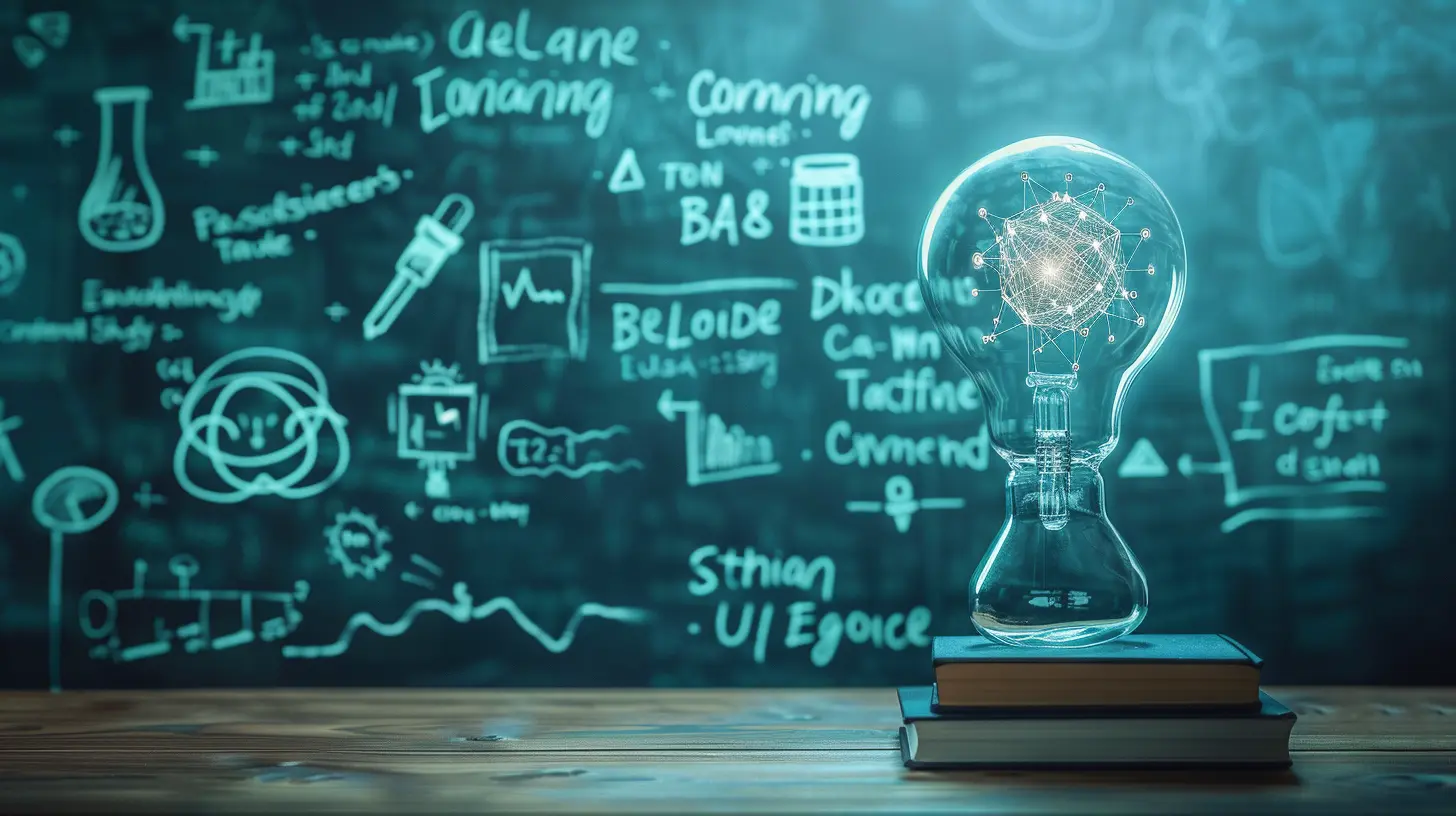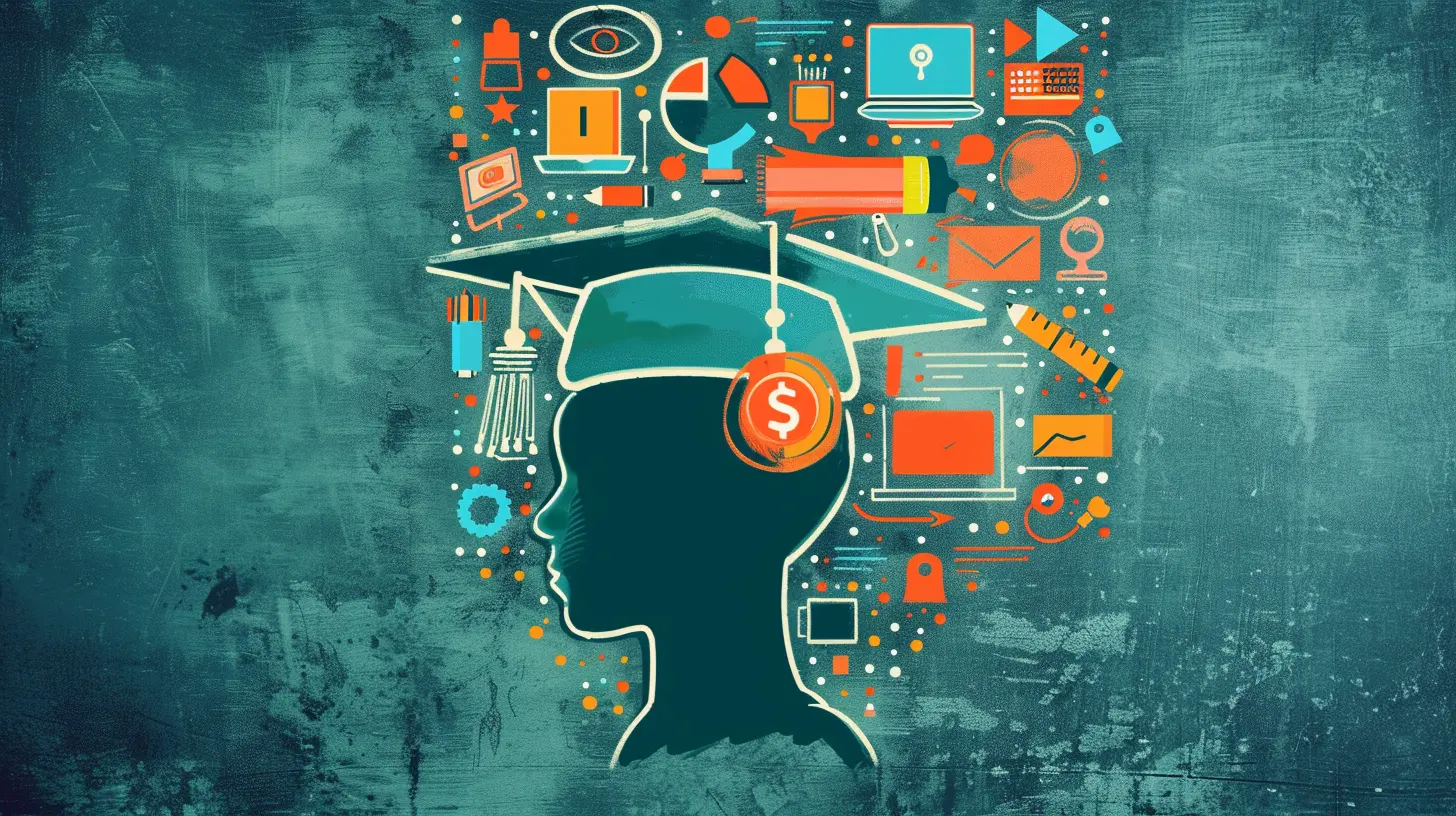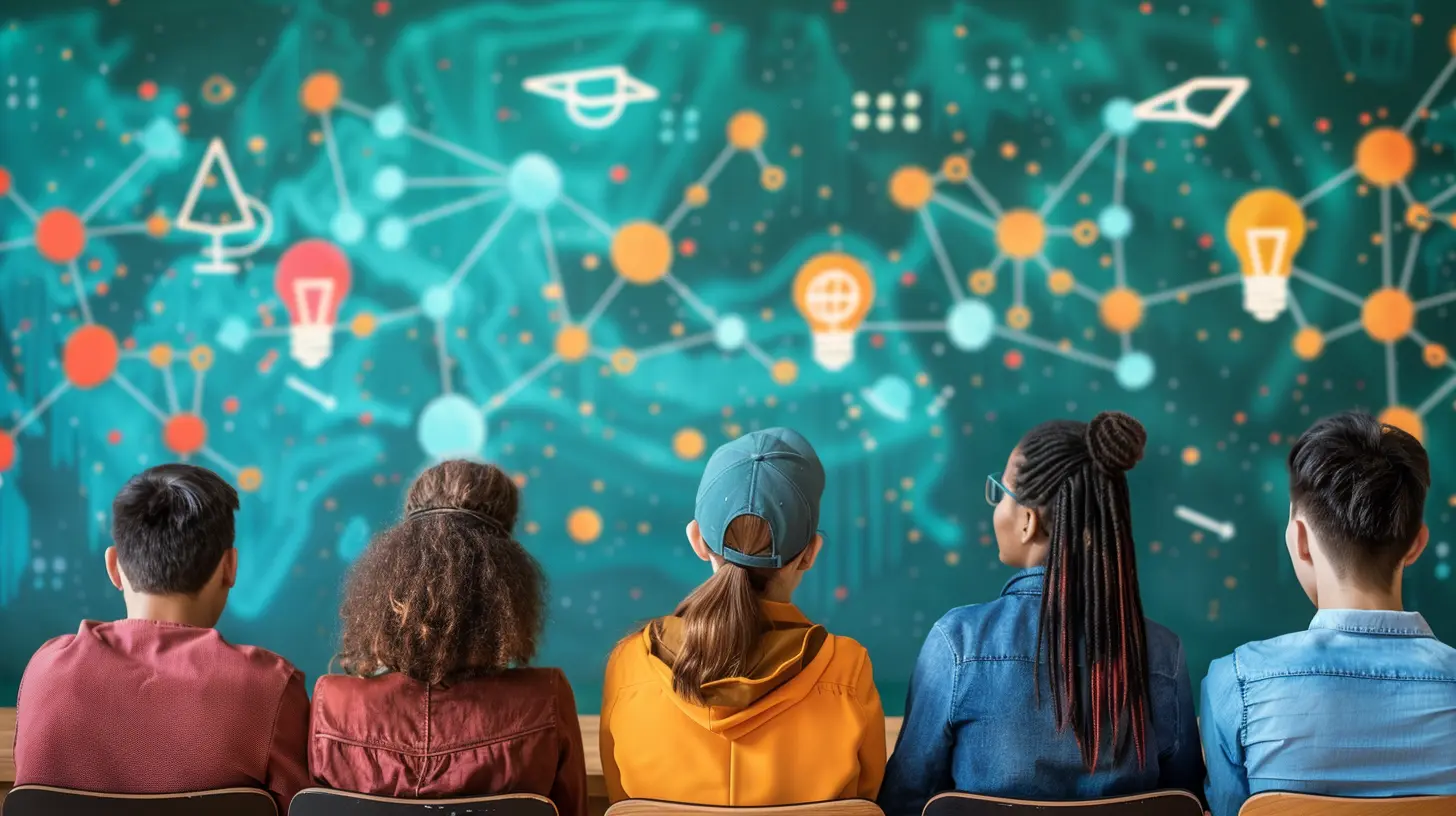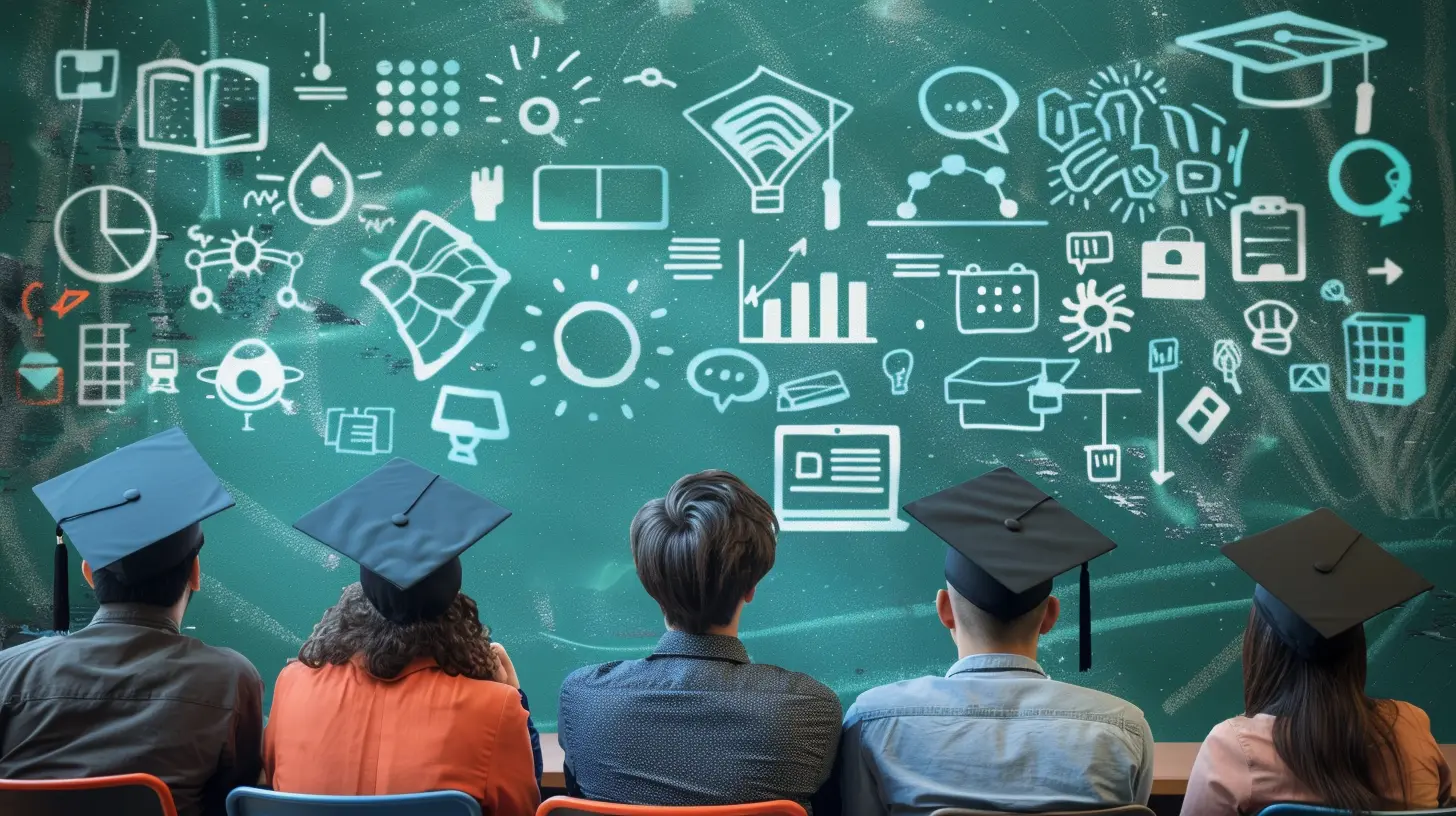Blended Learning and the Shift Toward Competency-Based Education
1 August 2025
Ever noticed how learning today feels a little different from how it was five years ago? That’s not your imagination—education is going through a major transformation. The traditional "one-size-fits-all" classroom model is gradually making way for a more flexible, personalized approach. Two big buzzwords leading this shift? Blended Learning and Competency-Based Education (CBE).
Let’s dive into what these terms really mean, why they matter, and how together, they’re changing the face of education for the better. Don’t worry—we’ll keep it simple and straight from the heart, no academic jargon here!
What Is Blended Learning?
Picture this: You’re sitting at home, cozy in your pajamas, learning algebra through a fun online quiz. The next day, you're in school, applying what you learned by solving real-world problems with your classmates. That’s blended learning in action.Blended learning combines traditional face-to-face instruction with online learning. Think of it as the best of both worlds. It gives students the flexibility to learn at their own pace while still having access to teachers for guidance and support.
Key Components of Blended Learning
Let’s break it down:- In-Person Instruction: The classic classroom setup where students engage directly with their teachers.
- Online Learning: Digital platforms or resources that provide interactive, self-paced learning materials.
- Student Control: Learners decide when, where, and how fast they study certain materials.
This approach makes learning more accessible and engaging. It’s like upgrading from a flip phone to a smartphone—it just makes more sense in today’s world.
What Is Competency-Based Education?
Now, let’s talk about the other game-changer: Competency-Based Education, or CBE for short.Think of CBE like a driving test. You don’t pass just because you spent 30 hours in driving school. You pass when you prove you can actually drive. Simple, right?
CBE follows the same logic. It’s not about how much time a student spends in class, but whether they’ve actually mastered the material.
How CBE Works
In a traditional system, students move forward based on age or time spent in class. But with CBE, students only advance once they demonstrate they've truly grasped a topic. It’s all about skills over seat time.Here’s what makes it tick:
- Clear Learning Goals: Students know exactly what they’re expected to learn.
- Mastery-Based Progression: You move ahead only when you’ve mastered the content.
- Flexible Pacing: Need more time? Take it. Already a whiz at this topic? Move on.
CBE puts the power back into the hands of learners. It recognizes that everyone learns differently, and that’s a beautiful thing.
Why the Shift Toward These Models?
Now you might be wondering—why fix what isn’t broken? Well, the truth is, the old model is kind of broken.Traditional education assumes that all students learn the same way at the same speed. But reality begs to differ. Some students need more time, while others need more challenge. And let’s not forget the growing need for skills that actually prepare students for the real world.
The Pandemic Push
COVID-19 threw the education system into a tailspin, right? But it also forced schools to try new methods—like online learning. While the situation was tough, it opened the door to innovation. Blended learning and CBE stood out as the shining stars when everything else was falling apart.
The Magic Combo: Blending Both Worlds
Alright, so what happens when you combine blended learning and CBE? Spoiler alert: You get a supercharged, student-centered learning environment.Personalized Learning at Its Best
Blended learning allows flexibility in how students engage with content. CBE ensures they truly understand it before moving forward. Together, they create a personalized pathway for every learner. It’s like giving each student a GPS customized just for them—no more getting lost in the system.Better Engagement and Motivation
When students can learn at their own pace and see their progress in real-time, motivation naturally increases. Add interactive online tools to the mix, and suddenly learning feels a bit more like a game—and who doesn’t love games?Real-World Readiness
CBE focuses on mastering skills, not memorizing facts for a test. With blended learning tools, students can simulate real-world situations through videos, case studies, and virtual labs. They don’t just learn—they do.Challenges to Watch Out For
Okay, we won't pretend it’s all rainbows and unicorns. There are some bumps on the road.Tech Access and Equity
Not every student has access to a laptop or strong Wi-Fi at home. That’s a big barrier to blended learning. Schools need to step up and ensure all students get the tools they need.Teacher Training
Let’s be real—teachers aren’t superheroes (though they’re close). Switching to blended+CBE isn’t easy, and educators need training and support to make it work smoothly.Assessment Overhaul
Traditional tests don’t always work well in a competency-based system. We need better ways to measure real understanding—things like portfolios, presentations, or peer reviews.How Schools Are Making It Work
Despite the challenges, many schools across the globe are already embracing this new learning duo.Case Study: Summit Public Schools (USA)
Summit has created a personalized learning platform that mixes online modules with mentoring and real-world projects. Students master skills before moving on. It’s not perfect, but it’s working—and it’s inspiring change in other districts.Global Examples
Countries like Finland and New Zealand are leading the way by designing curricula that focus on core competencies and real-life skills, using a blend of tech and classroom mentorship.What Parents and Students Think
Surprisingly (or maybe not), many students say they prefer this model. They feel more in control and less stressed. Parents appreciate the shift too, especially seeing their kids gaining skills that actually matter in life—like problem-solving, teamwork, and digital literacy.Still, change is never easy, and there are adjustments to be made. But overall, the feedback is hopeful.
Looking Ahead: What’s Next?
Blended Learning and Competency-Based Education aren’t just passing trends—they’re the future. As more schools adopt this approach and technology keeps evolving, education will continue to become more flexible, inclusive, and tailored to the needs of each student.We’re not just teaching kids to memorize formulas or dates—we’re teaching them how to think, adapt, and thrive in the real world.
And honestly, isn’t that what education should be all about?
Final Thoughts: It All Comes Down to the Student
Here’s the deal: Every student learns differently. Some need a bit more time, others just need a different way to learn. Blended learning and competency-based education recognize that, and together, they offer a system that’s fairer, more engaging, and way more relevant.We’re moving away from the idea of teaching to the middle—and instead, we’re designing education to meet everyone where they are. That’s pretty powerful.
So whether you’re a teacher, a parent, or a curious learner, it’s worth keeping an eye on this shift. Because the future of learning? It’s already here—and it’s looking pretty bright.
all images in this post were generated using AI tools
Category:
Blended LearningAuthor:

Fiona McFarlin
Discussion
rate this article
1 comments
Zaren Sweeney
This article highlights the vital role of blended learning in promoting competency-based education, enhancing student engagement and personalized learning experiences effectively. Great insights!
August 9, 2025 at 12:25 PM

Fiona McFarlin
Thank you for your feedback! I'm glad you found the insights on blended learning and competency-based education valuable.


